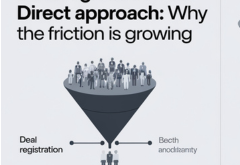A recent global report commissioned by Hewlett Packard Enterprise (HPE) sheds light on significant blind spots in organizations’ AI strategies, despite high confidence levels. The study, titled ‘Architect an AI Advantage’, surveyed over 2,000 IT leaders across 14 countries and revealed critical gaps in understanding and execution that could hinder successful AI outcomes.
Key Findings:
- Lack of Understanding Across AI Lifecycle: Less than half of IT leaders fully comprehend the compute and networking requirements across the end-to-end AI lifecycle, including training, tuning, and inferencing. This gap in understanding poses challenges in provisioning resources effectively.
- Low Data Maturity Levels: While organizations recognize the importance of data management for AI success, data maturity levels remain low. Only a small percentage of organizations can run real-time data pushes/pulls and have established data governance models, leading to potential delays and inaccurate insights in AI model creation.
- Fragmented Approach: Many businesses adopt siloed approaches to AI, with only a fraction setting a consolidated strategy. This fragmentation hinders alignment between processes and metrics, exacerbating delivery issues.
- Neglect of Legal and Compliance Considerations: Despite the critical role of legal and compliance functions, a significant percentage of IT leaders do not involve legal teams in AI strategy discussions. Moreover, ethics and compliance are deemed least critical for AI success, posing risks of exposure to proprietary data and brand reputation damage.
- Overconfidence and Risks: Overconfidence in AI plans without proper ethics and compliance frameworks poses risks such as exposure of proprietary data, ineffective models, and increased carbon emissions from high power demands. This could result in negative ROI and damage to overall company brand.
Dr. Eng Lim Goh, SVP for Data & AI at HPE, emphasizes the importance of a holistic AI approach, considering the balance between being a first mover and understanding the gaps across the AI lifecycle. He highlights the need for hybrid solutions and modern AI architectures to effectively deliver on the promise of AI while mitigating risks and maximizing ROI.
 Latest Technology News Today – Get Latest Information Technology Updates and Services Latest Technology News Today – Get Latest Information Technology Updates and Services
Latest Technology News Today – Get Latest Information Technology Updates and Services Latest Technology News Today – Get Latest Information Technology Updates and Services 









